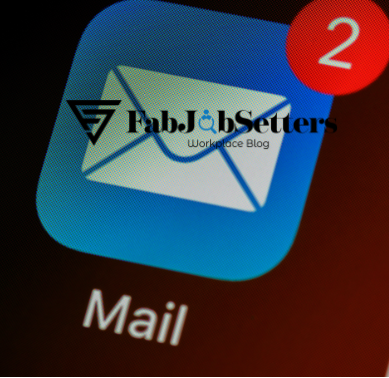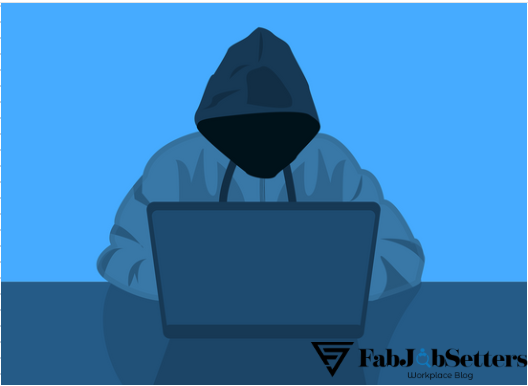EMAIL ETIQUETTE

Email Etiquette
In the business world, communication is inevitable. The transfer of information from one person to another is referred to as communication. In the business sector, there are various methods for transferring information. Email is one such example. In this post, we’ll look at the best way to convey information both inside and outside of the corporate environment, as well as some guidelines to follow when sending and receiving emails.
A good email increases communication skills, strengthens corporate ties, and establishes a proper level of professionalism in actions. Email etiquette assists in setting the proper tone when sending and receiving emails. Email communication can occur both within and outside of the firm.
Examples are sending emails between employees in the same company and also sending emails outside the firm. Such as partners, customers, suppliers, vendors, and others.
Ways to prevent email fraud?
There are cases where they may be email-related fraud caused by opening unauthorized mail from unknown sources. All employees must look out for such mail and report when such is perceived. Everyone must contribute to reducing such risk.
Therefore, employees must stay alert by enabling multi-factor authentication, using strong passwords, and recognizing and reporting phishing, among other things. As an employee, you must review carefully all mail received in your official mail before opening.
Here, we’ll look at a few of the things to watch out for while emails sent are received, in the inbox.
- All Unexpected emails received should be checked for authenticity.
- Email that requires urgent attention.
- Email that demands you must open the attachment. This is a red flag and should be checked thoroughly.
- Email when the sender’s name does not correspond to the message signature.
- Email that indicates negative consequences will occur if action is not taken.
- Email from an unknown sender.
- Email so much containing a grammatical blunder.
- Slide over attached links in emails to validate their genuineness.
- Emails requiring the transmission of confidential information. Such may include passwords or usernames that are confidential and for personal use only.
- Email from a sender whose email address does not match the organization’s email address.
Organizing your email
It may be challenging to identify the emails or messages you require if your inbox is crowded and disorganized, and it may also be challenging to tell when a new email is waiting. Organizing emails helps you not to miss out on very important emails that might require urgent attention.
Set delivery rule: This is a method for setting up rules for email delivery to your inbox. The rules will either flag or highlight an email for you or reroute it to another folder so you may examine it later using the set filters.
Rules of sending an email
- All emails sent must have a subject: the subject will be a summary of the purpose of the letter. A good subject tells the recipient the motive for the email, and to act immediately when possible. The subject must be clear and understandable.
- All official email bodies must be simple, clear, and understandable to all. When an email is bulky it may make the recipient lose the main context of the email. You may use bullet points to highlight the most important point in an email.
- Send an email to an individual but only copy the appropriate concerned persons or team.
- Address the receiver with their first name.
- All emails must have a closing remark.
- Before sending an email with an attachment, open it first to check that you are delivering the correct documents. Save the attachment with words, sentences, or phrases most related to the specific attachment. Also, compress large attachments.
Email Etiquette Rules
- Before clicking the send button, read thoroughly again.
- Ensure that all punctuation, spelling, and grammatical errors are corrected.
- Try to respond to all emails as soon as possible; failure to do so may result in some form of loss. For example, you may miss a business opportunity if you do not respond within the anticipated time frame.
- Disrespectful and abusive language is inappropriate and should be avoided. When sending an email in a business context. All email tones should be professional.
- Reply to all with caution, before using the reply all button, go through all beneficiaries to ensure that the email concerns them.
- When sending an email, only use the right themes, font size, and color.
- Avoid using all capital letters when sending; all capital letters are typically rude.
Blind carbon copy (BCC)
This is used when you wish to send an email to multiple recipients while hiding the email from each of them. It is requested for security reasons.
Out-of-office replies
It is important you set out-of-office replies when you are out of the office for any reason (for example sickness, leave, or vacation.) These are automatic responses that a sender receives when sending mail to you; they signal that the receiver is out of the office and may not receive or respond promptly.
A second employee who can be reached by sending the same message must be mentioned in out-of-office responses, as well as a third person (boss) to whom matters needing tasking results can be escalated. This makes it easier for workers to continue even when someone isn’t in the office.
Sample: Thank you for contacting me; I may not respond quickly because I am on leave for two weeks; I will return on XYZ date. Kindly contact Mr. XYZ for issues that require immediate attention. Thank you.
Also Read, https://fabjobsetters.com/critical-success-factors-and-key-performance-indicators/
Summary
Email etiquette if properly adhered to will help in achieving corporate goals and objectives. Firms should train all staff, to know the importance of good email etiquette. Even when email communication is not face-to-face, the recipient may feel the sender’s connection through a good email sent.
Firms may also avert the risk of loss through strict adherence to email etiquette. It is a failure on the part of the sender when the receiver misinterprets an email; to avoid such scenarios, appropriate email etiquette should be maintained.










One thought on “EMAIL ETIQUETTE”